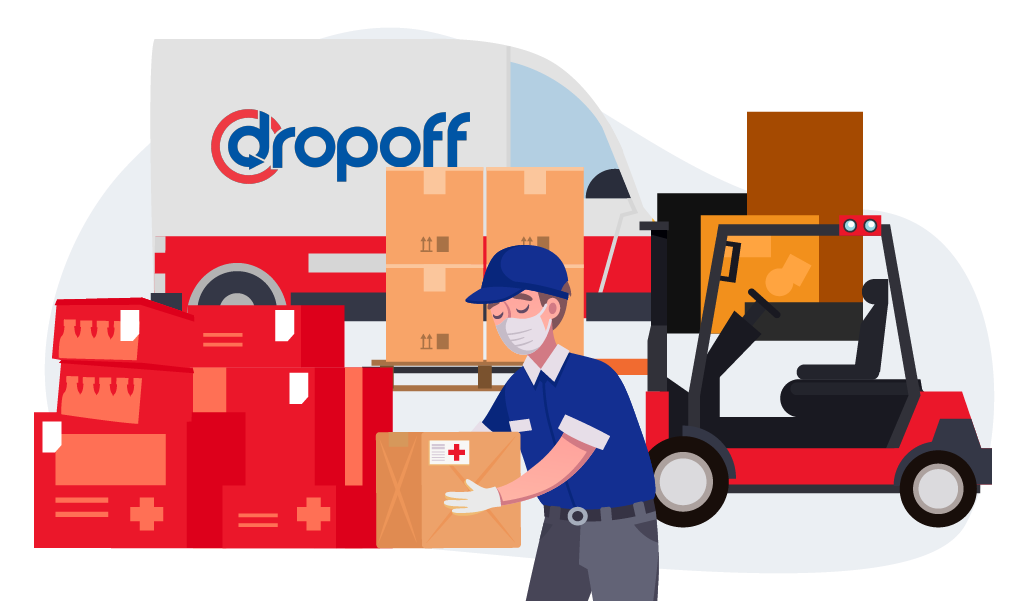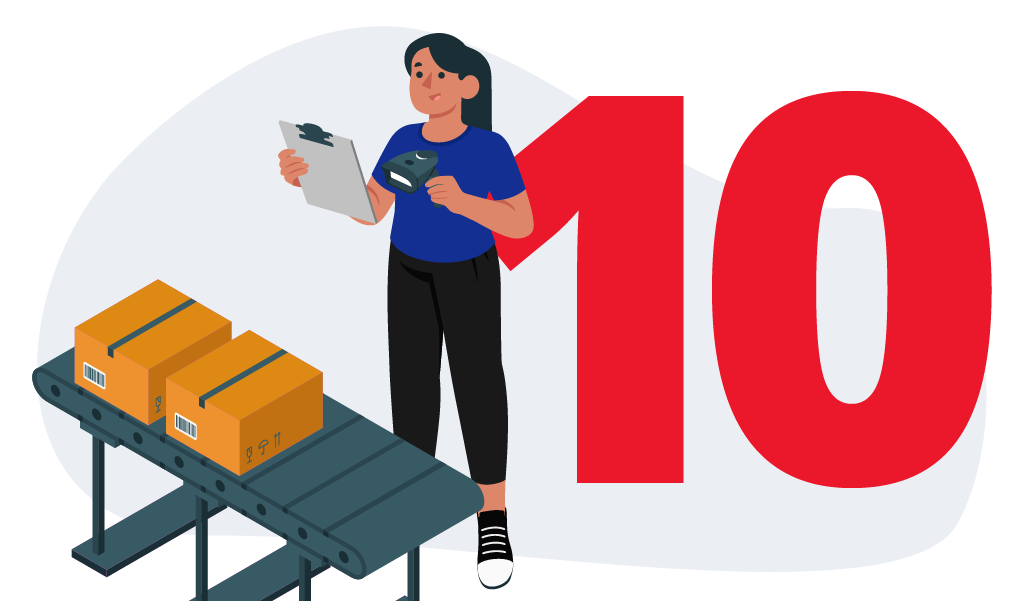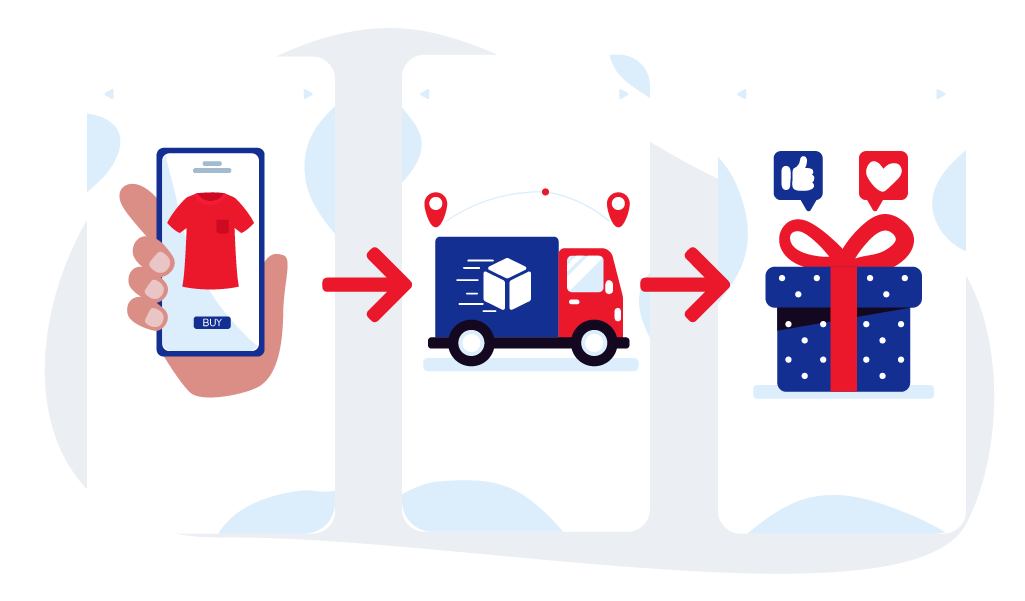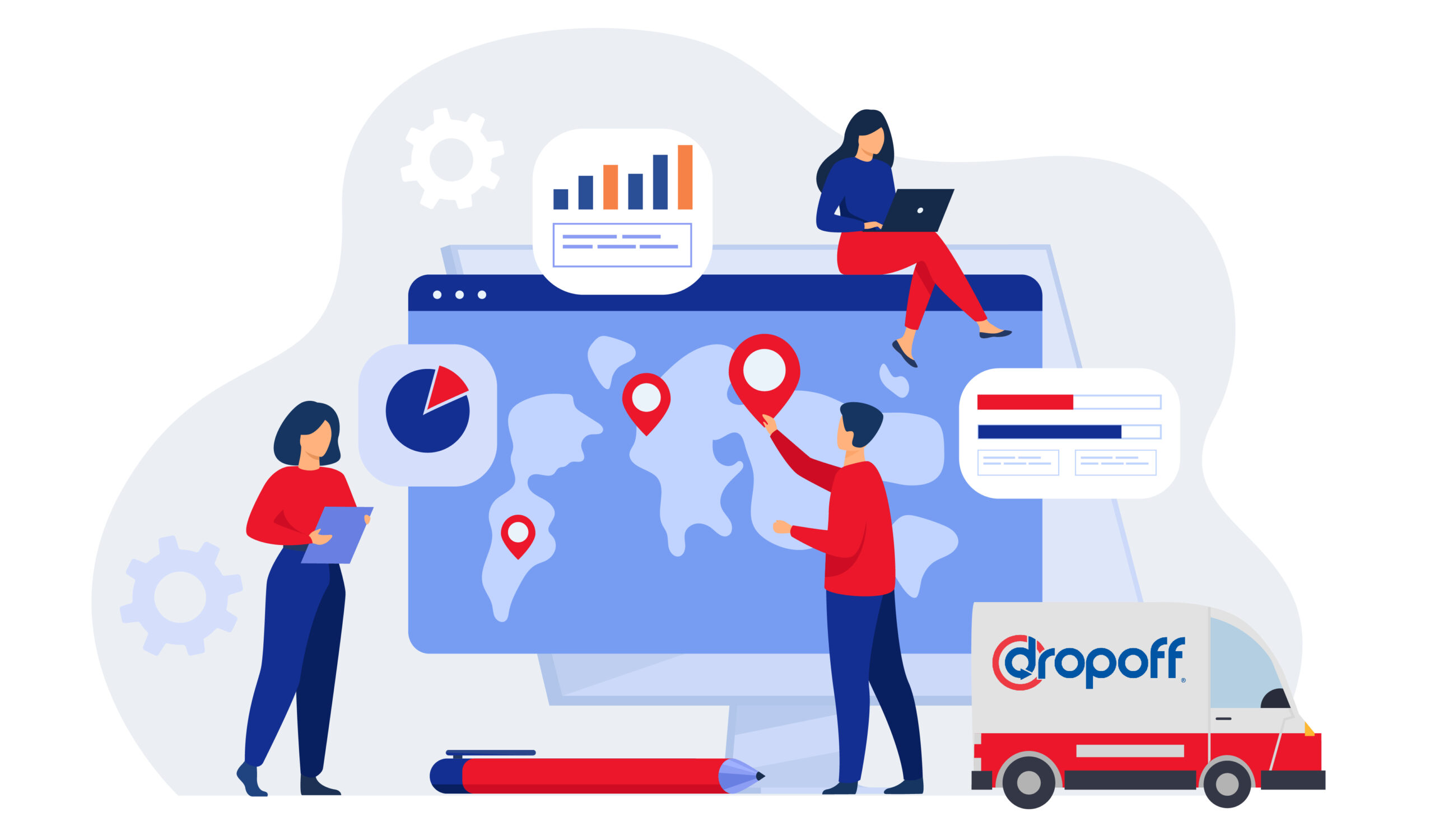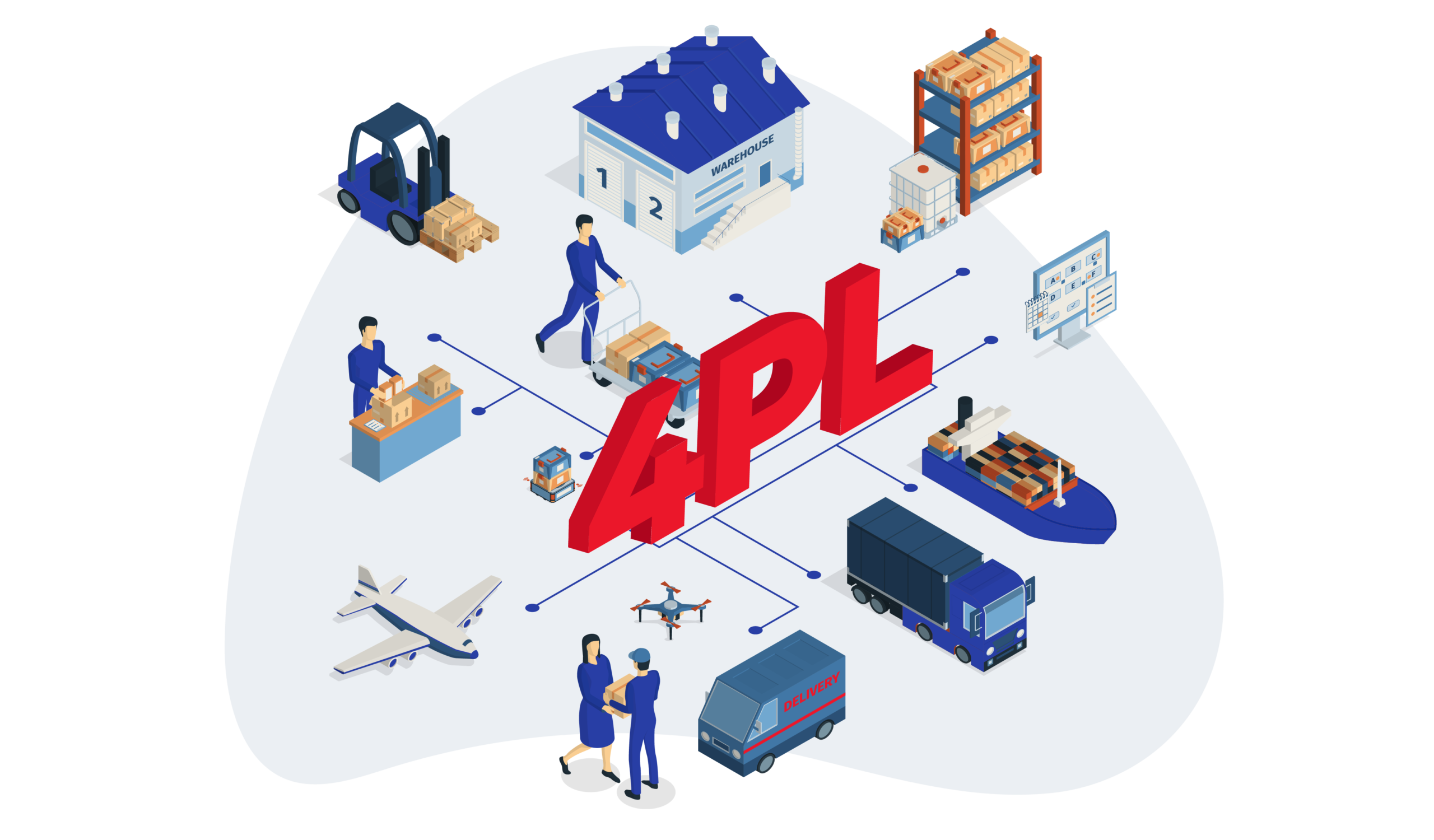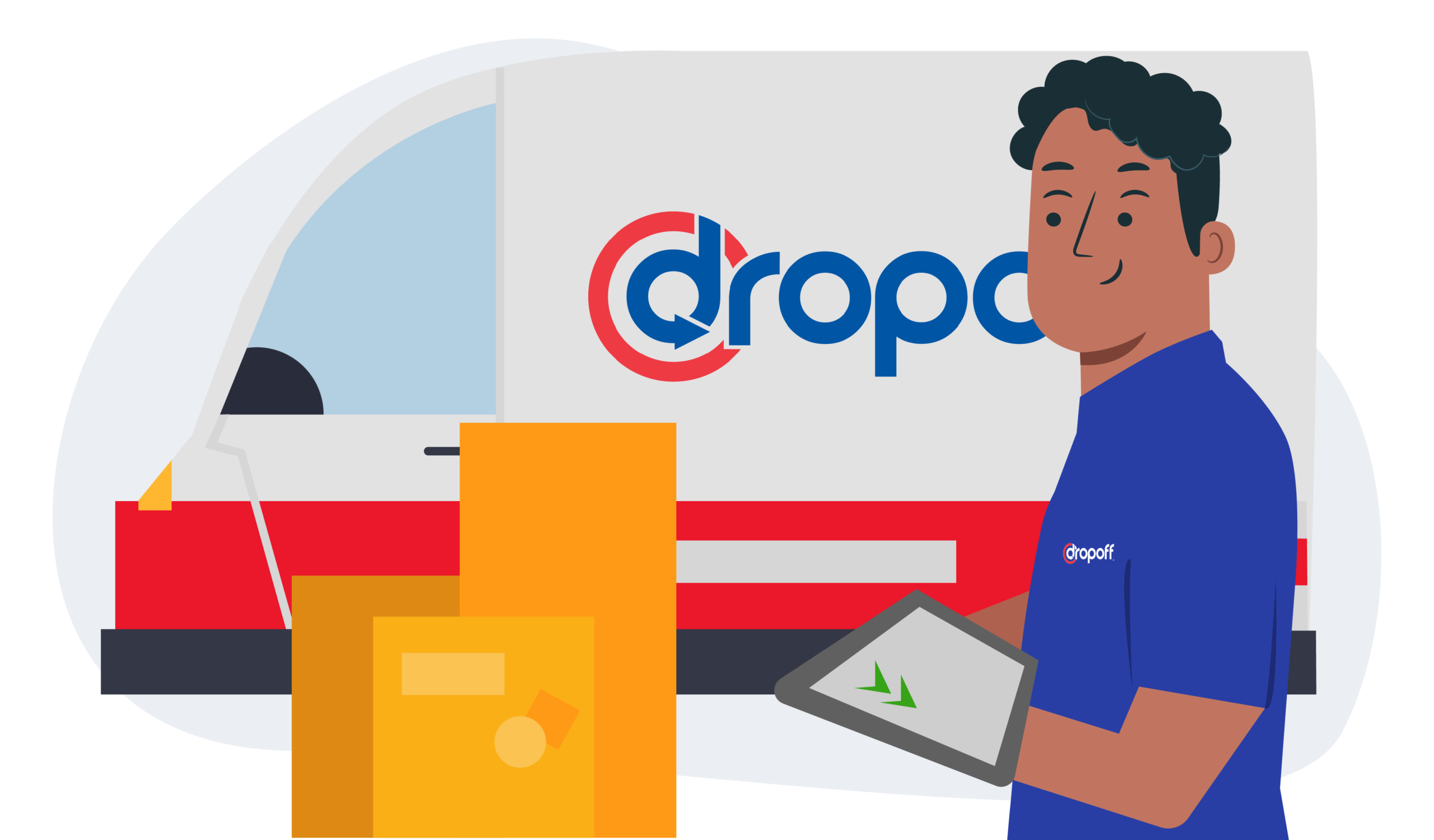Inbound Vs Outbound Logistics – What’s The Difference?
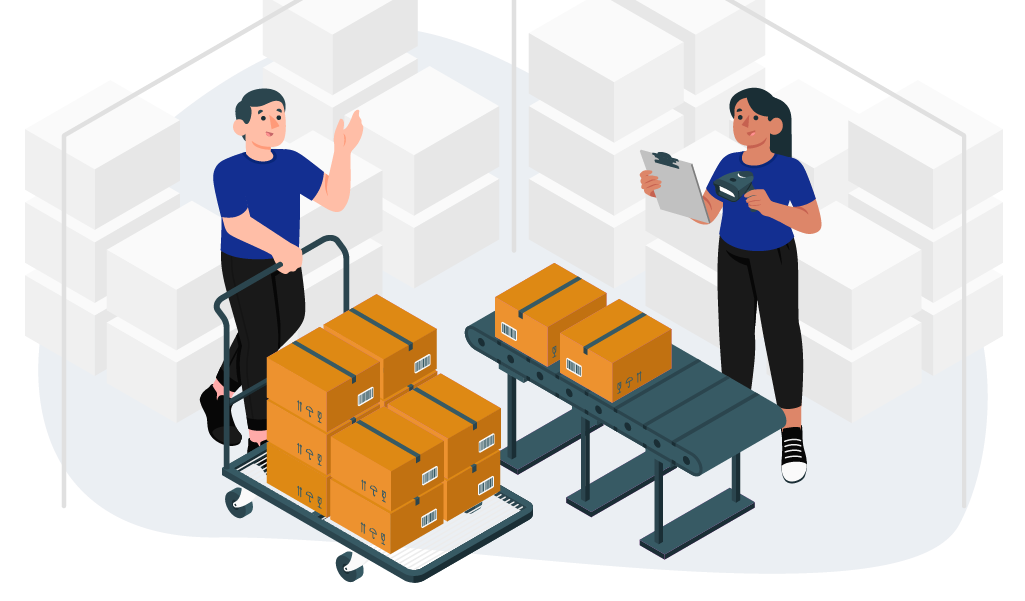
Inbound and outbound logistics are two essential aspects of the supply chain.
But what’s the difference between them?
This blog post will discuss the differences between inbound and outbound logistics and explain why both are important for your business.
What Is Inbound Logistics?
Inbound logistics involve transporting raw materials, supplies, or finished goods into a supply chain. Essentially, this type of logistics allows businesses to obtain the products they will eventually sell.
All processes transporting supplies from a supplier to a company’s storage facilities, including warehouses, distribution centers, fulfillment centers, or retail stores, are considered inbound logistics.
What Is Outbound Logistics?
Outbound logistics describes the movement of finished inventory out of a supply chain. The process includes removing inventory from storage, filling orders, and delivering the items to customers.
Outbound logistics processes cover anything to do with confirming and fulfilling orders (including picking and packing), shipping, last-mile delivery, customer service, and troubleshooting.
What Is the Difference Between Inbound and Outbound Logistics?
Inbound logistics is when supplies or materials come into a business, and outbound logistics is when goods and products are sent out to customers. Both types of logistics mainly concentrate on transportation. But inbound is focused on receiving items, while outbound centers around delivery.
The following table outlines the differences between inbound and outbound logistics processes.
Inbound Logistics
| Processes | Touchpoints | Delivered to… |
| Materials management | Supplier | Company |
| Sourcing | Manufacturer | Brand |
| Warehouse recieving | Distributor | Retailer |
| Inventory storage | Product Holder | Third-Party Logistics Company |
Outbound Logistics
| Processes | Touchpoints Transported from… | Delivered to… |
| Order Confirmation and Processing | Company | End Customers |
| Picking and Packing | Brand | End Users |
| Shipping | Retailer | |
| Last-Mile Delivery | Third-Party Logistics Company | |
| Customer Service Involving Deliveries |
Most people aren’t aware of the differences between different logistics, including DAP vs. DDP shipping.
Step-By-Step Inbound and Outbound Logistics Processes
Inbound logistics and outbound logistics are made up of several different steps that work together to make sure goods and materials flow smoothly into and out of a business.
Let’s break down these steps and understand them better.
Steps in Inbound Logistics (Receiving)
1. Sourcing Materials
The first stage of inbound logistics — and the beginning of the supply chain process — is deciding what inventory your business needs and how to get it. Sourcing involves looking for materials or products and deciding which manufacturer, supplier, or vendor you’ll buy them from.
2. Purchasing Materials
Your business will confirm the order with a purchase order for the sourced materials or inventory. You and your supplier will also document the transaction, including what materials were ordered by your company, and have standard freight shipping tracking procedures in place.
3. Transporting to Distribution Channels
Once you confirm your order, the next step is to freight ship the goods via ocean, air, ground transport, or a combination of all three. Your business can send merchandise to different locations, such as retail stores, warehouses, and fulfillment centers.
4. Receiving
Once the merchandise arrives at its destination, the receiving team is responsible for documenting the arrival of the inventory. The team will take in the shipment, log it into their records correctly and count its contents to confirm that what they received is exactly what was ordered.
5. Storage
After the shipment arrives and is accepted, it will move into storage. It will stay there until outbound shipments begin.
6. Reverse Logistics
Returns and exchanges are technically considered inbound logistics because inventory is coming into the warehouse. This is also known as reverse logistics!
When shipments from customers arrive at the warehouse, they’ll go through an examination. If the product is unopened or in good condition, it will join the available inventory; otherwise, the team will need to find a way to move it out of the warehouse.
Steps in Outbound Logistics (Shipping)
1. Order Processing
The first outbound logistics step after a customer places an order on your eCommerce website is to process the order.
Orders will go through a business’s order management system and then be passed to the appropriate warehouse or fulfillment center, where it enters the fulfillment queue.
2. Product Picking and Packing
Once an order is placed, products are retrieved from their correct inventory location. Stock levels are then updated to ensure that the right product is available. After that, products are sorted by carrier and service type, labeled with corresponding shipping details, and packed into boxes or poly mailers.
Want to learn more about this logistics stage? Here is a guide on pick and pack fulfillment.
3. Shipping Finished Goods
In the end, carriers such as FedEx, UPS, and USPS pick up the packages and transport them to their final destinations. Depending on how far a package needs to go, carriers will use different transportation methods during shipping (including ground transport, air travel, railroads, or even ships).
4. Customer Service and Troubleshooting
Since outbound logistics refers to any process that fulfills customer orders, this includes responding to customer complaints and other concerns. Businesses should have systems to communicate with customers and quickly solve order issues.
Challenges of Inbound Logistics and How to Overcome Them
Inbound logistics is expensive and has long lead times, making it challenging for businesses to have the right amount of inventory and make warehouses more efficient.
Here is a breakdown of some specific inbound logistics challenges:
1. Shipping Inefficiencies
Too often, companies blow their entire budget on shipping. To fix this, you must negotiate rates with fewer carriers and make full truckloads for inbound shipments. You can also set vendor standards (VICS) on price and service. Remember: analytics will help you identify areas where money is wasted!
2. Lack of Information
A common challenge for many businesses is not knowing where their shipment is, when it will arrive, and how much the entire thing costs. This lack of information sometimes leads to errors, like carrying extra inventory, making purchases earlier than necessary, and experiencing production delays.
Real-time information systems solve this by tracing goods and communicating with suppliers to make sure that entries for materials are correct.
3. Surges in Deliveries and Receiving
Not planning means higher chances of your business being overwhelmed with managing too many deliveries.
This causes a pile of trucks in your parking lot and drivers not knowing which dock to use. Any mistakes in the timing of deliveries make it difficult for the receiving staff to perform efficiently. A poor receiving process causes mistakes and a backup of materials piling up.
Some solutions are scheduling arrivals, routing specific deliveries to particular docks, and keeping a consistent flow throughout the day.
Warehouse management software (WMS) will help logistics run more smoothly. Another helpful technique is cross-docking. The receiving department matches incoming inventory to open orders. Once workers unload the products, they immediately move them to another dock for loading onto an outbound truck without ever storing them in between.
Here is a quick 8-minute read about launching omnichannel third-party logistics in your business.
Challenges of Outbound Logistics and How to Overcome Them
When a company’s outbound logistics aren’t up to par, it risks its customer relationship and bottom line. Inaccurate orders and high shipping costs are just two of the many issues that will come up.
Here is a breakdown of some specific outbound logistics challenges:
1. Coordinating Operations
Outbound logistics demands a lot of responsibility. Manufacturing output, storing goods, ensuring customer orders are filled, and the list goes on.
If production rates go up, for instance, the team must adapt quickly by freeing up space in the warehouse. And as sales increase due to customer demand, shipping and delivery schedules will also need to change.
Infrastructure software will take away some of that strain by providing real-time updates on production levels and storage capacity so that any issues can be fixed before they become actual problems.
2. Utilizing the Seven Rs
The seven Rs, created by John J. Coyle, are: getting the right product, to the right customer, in the correct quantity, in the proper condition, at the right place and time while being low in costs.
Managing this successfully will require an ongoing process of constantly improving itself with a data-driven analysis of performance, which then points out any areas needing improvement.
3. Inventory Costs
Careful planning is key to avoiding holding costs and still meeting customer demand. Paying attention to the sell-through rate, inventory turnover, safety stock, and shifts in demand will help track your progress.
Examples of Outbound Vs. Inbound Logistics
A company’s inbound and outbound logistics depend on what it is selling and its business model.
1. Inbound Logistics
- Purchasing and Sourcing: A clothing store, Bellz, figures out how much fabric, thread, buttons, zippers, and other materials it needs to make its upcoming fall fashion line. The procurement team works with the designers to find vendors that have the clothes needed at a reasonable price in the right colors and styles. The purchasing manager negotiates contracts with each vendor.
- Recording and Receipts: A procurement clerk creates the purchase orders, sends them to suppliers, and keeps track of them.
- Notification: Vendors will send the company an electronic acknowledgment with shipment and tracking information included after placing an order.
- Load Arrival: Trucks carrying the supplies arrive at the store’s facility.
- Receiving: The company’s receiving staff unloads the materials and scans barcodes or RFID tags to count and identify the products. They verify the quantity and condition against the purchase order. The materials are then taken to the warehouse, where they await transformation into clothing pieces.
- Reverse Logistics: The receiving team also handles the return of unsold clothing from retailers. This means that stores send back leftover inventory and receive partial credit toward purchases of new season merchandise. Last-season apparel goes to a staging area for the team that fulfills orders from discount stores and liquidators.
2. Outbound Logistics
- Customer Order: Sade, a national boutique chain, has ordered a collection of women’s pants, blazers, and scarves from Bellz. Sade will use information about customers’ buying behavior and popular items to decide how many of each product to buy and in which sizes.
- Order Processing: Bellz’s staff must ensure that they have enough stock. Then, the computer system at Bellz starts to get the clothes ready to be sent. The system prints out instructions for the people in the warehouse.
- Replenishment: Bellz’s planners note that a particular blazer sells faster than expected and ask the garment makers to sew more. Hence, workers move it from remote storage to the shipping warehouse.
- Picking: Warehouse staff members use a zone strategy when picking garments for multiple orders. Workers will hang some blouses, for example, on electric garment racks along with blouses that are part of orders from two other retailers. They use barcodes to separate the different orders.
- Packing and Staging: All the clothing items for an order come to the packing station. A staff member scans the barcodes to check that the order is correct. Packers put the clothing in boxes with tissue so the garments do not wrinkle. They put boxes together on pallets, shrink-wrap them, and add destination and manifest labels.
- Loading: Workers load the pallets onto trucks, ready for delivery.
- Shipping and Documenting: Once the order leaves, Bellz’s system records the shipment and sends information about where it is to Sade’s purchasing department.
5 Tips on How to Optimize Your Outbound Logistics
Optimize your outbound logistics by building relationships and honing your negotiation skills. Use technology to figure out delivery networks, plan routes, organize schedules, and keep costs down.
1. Know When Fast Delivery Begins
To ship products quickly, consider setting up product staging at distribution centers. You will need to organize the shipments according to the guidelines of the distribution center and use packaging that meets their requirements.
A distribution center may use a lumper service in some industries, like wholesale food supply. Someone from a different company comes in to help load or unload trailers. The goal is to make the process quicker so the truck driver can take a break and leave again. You need to know whether the distribution center will use lumping so you can plan for these extra costs.
2. Adapt to Current Inventory Techniques
More companies are adapting to the new norm of smaller, more frequent orders using just-in-time inventory methods. That means there will be changes in outbound logistics, including increased LTL shipments to accommodate customers who do not have room to keep excess products.
You’ll find more tips on inventory management in our guide on the most common logistics issues and how to overcome them.
3. Build Partner Relationships
Work with people who help you send your product out, like your customers and the people who ship your product.
They will tell you how well your product sells if you have a good relationship with them. You’ll be able to change how much product you make, how it gets sent out, and when it ships. Working closely with just a few shipping companies gives you more power over price and agreements about the level of service.
4. Use Smart Route Planning
Automated route planning will help deliver goods faster and reduce fuel costs, leading to happier customers.
5. Consider Hiring a 3PL
When your company struggles with the price and difficulties of outbound logistics, turning to a 3PL provider is a great way to save money and time. 3PLs usually have connections that offer volume discounts and other benefits, letting them pass along some savings to you.
Did you know that 3PLs and 4PLs are entirely different? Here’s a guide on 4PL logistics!
5 Tips on How to Optimize Your Inbound Logistics
Making the operation faster, more cost-efficient, and more agile means improving how things come into the business. Look at every process, find what is good and bad about it, and then improve it.
1. Measure Your Current Model’s Performance
Look at areas of your business that incur extra costs, create waste, or produce products in poor quality. Also, check for any delays or gaps in information. Remember to look at tangible and intangible factors that might affect your business negatively. Finally, compare your business to the competition.
2. Analyze Your Decisions
Understanding how your decisions will play into cost and efficiency is essential. If the procurement department makes large purchases to receive volume discounts, will those savings be canceled out by the expense of managing excess inventory?
The main cost drivers for inbound logistics are purchasing from suppliers, transportation, receiving warehousing material, and handling inventory.
3. Develop Strategies to Improve Inefficiencies
Consider the pros and cons of each activity. Investing in automation and analytics might help you make more informed decisions based on data.
4. Build Relationships with Suppliers
Having a good relationship with your suppliers might get you benefits like lower prices, shorter wait times, and cost savings. Plus, you will also feel more secure during tough times.
5. Use a Transportation Management System (TMS)
Use this software to optimize your freight shipping by automating the process, managing shipments, and comparing rates among carriers. Full visibility into your company’s supply chain will increase efficiency and lower costs.
Check out this complete breakdown of the best tips for efficient logistics planning.
How Dropoff Can Help with Inbound and Outbound Logistics
Now that we have established a difference between inbound and outbound logistics, here’s where we come in.
A big part of outbound logistics is shipping finished goods to customers. Companies must carefully and quickly get the products to their customers without damaging them. This process is often complex, slow, and expensive.
Dropoff helps with this process in a few ways. We have a network of qualified couriers who are experienced in shipping fragile and valuable items. Second, we offer real-time tracking, so you have full visibility into where your shipment is at every step of the way. And lastly, we have a guaranteed delivery window, so you are confident your shipment will arrive on time.
Talk with a Dropoff expert today and find out how we take the hassle out of shipping finished goods to customers, so you can focus on running your business.
FAQs on Inbound Vs. Outbound Logistics
Inbound logistics is when supplies or materials come into a business, and outbound logistics is when goods and products are sent out to customers. Both types of logistics mainly concentrate on transportation. But inbound is focused on receiving items, while outbound centers around delivery.
Inbound transportation refers to the movement of goods into a facility, while outbound transportation refers to the direction of goods out of a facility.
Inbound transportation refers to the movement of goods into a facility, while outbound transportation refers to the direction of goods out of a facility.
Inbound vs. outbound shipping is essential to the smooth operation of any business that involves the movement of goods.
Inbound logistics refers to bringing goods into a facility, such as a warehouse or a factory. This includes receiving, inspecting, and storing the goods until they are needed.
On the other hand, outbound logistics is the process of shipping goods out of a facility. This can involve anything from packaging and labeling to loading and transportation.

